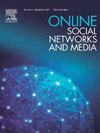Is it fake or not? A comprehensive approach for multimodal fake news detection
IF 2.9
Q1 Social Sciences
引用次数: 0
Abstract
In recent years, the proliferation of fake news has posed significant challenges to information integrity and public trust, paving the way for the development of artificial intelligence-based models that can analyze information and determine its veracity. This study comprehensively evaluates the Themis architecture in the context of fake news detection on two distinct public datasets: Fakeddit and ReCoVery. To enhance model performance, we systematically investigate various customizations of Themis, including the integration of Low-Rank Adaptation, diverse data augmentation techniques, and multiple configurations, employing the TinyLlama Large Language Model and CLIP ViT image encoders while tuning key parameters to optimize results. Our findings reveal that while the standard Themis model performed adequately, significant improvements were observed by incorporating LoRA and specific data augmentation strategies, particularly in the ReCoVery dataset. Comparisons with existing literature indicate that Themis achieves competitive performance, especially in the ReCoVery dataset, where it outperforms existing solutions.
它是假的还是假的?一种多模式假新闻检测的综合方法
近年来,假新闻的泛滥对信息完整性和公众信任构成了重大挑战,为基于人工智能的模型的发展铺平了道路,这些模型可以分析信息并确定其真实性。本研究在两个不同的公共数据集(Fakeddit和ReCoVery)上全面评估了假新闻检测背景下的Themis架构。为了提高模型的性能,我们系统地研究了Themis的各种定制,包括集成低秩自适应、多种数据增强技术和多种配置,采用TinyLlama大型语言模型和CLIP ViT图像编码器,同时调整关键参数以优化结果。我们的研究结果表明,虽然标准Themis模型表现良好,但通过结合LoRA和特定的数据增强策略,特别是在ReCoVery数据集中,可以观察到显著的改进。与现有文献的比较表明,Themis实现了具有竞争力的性能,特别是在恢复数据集中,它优于现有的解决方案。
本文章由计算机程序翻译,如有差异,请以英文原文为准。
求助全文
约1分钟内获得全文
求助全文
来源期刊

Online Social Networks and Media
Social Sciences-Communication
CiteScore
10.60
自引率
0.00%
发文量
32
审稿时长
44 days
 求助内容:
求助内容: 应助结果提醒方式:
应助结果提醒方式:


